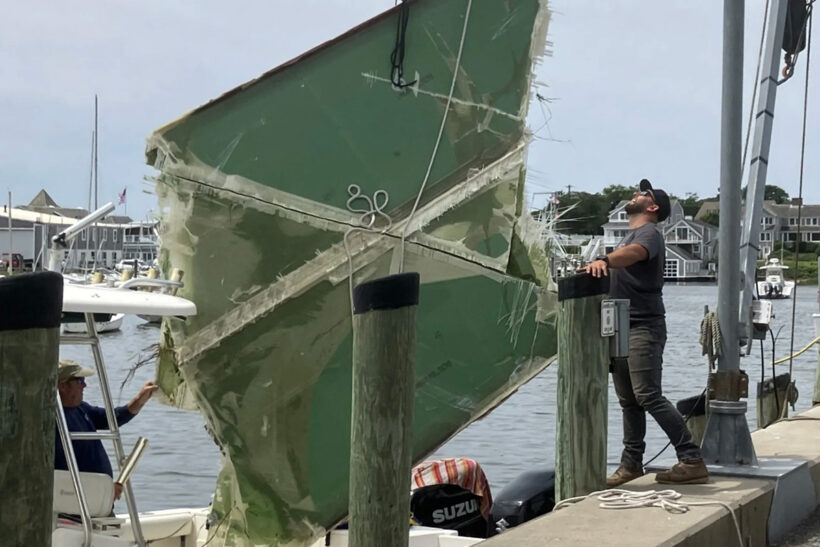Reports of the failure of a 107m long wind turbine blade during commissioning of the Dogger Bank wind farm – the world’s largest – have been confirmed by the operators. They remain tight- lipped, however, about any detail of the incident.
Responding to questions from Fishing News about any potential pollution or navigation hazard the failure may be causing, a spokesperson for the company referred us to a short statement posted four days earlier, saying only: “Further updates will be issued in due course as more information becomes available. Accordingly, the Dogger Bank project is not able to comment further at this time.”
The blade was built by GE Vernova, and is of the same design as the one that failed spectacularly in the Vineyard Wind development off the east coast of the USA in July, where thousands of sharp fragments of the blade washed up on nearby tourist beaches, leading to them being closed for several days during an emergency clean-up.
Last week’s incident on the Dogger Bank was the third for this particular type of blade in three months. An earlier failure at the same site in May was, said GE Vernova at the time, ‘the result of an installation failure’.

Dogger Bank wind farm is already the world’s largest. If Phase D is given the go-ahead, it could contribute up to 7.5% of the UK’s electricity needs.
The statement posted on the Dogger Bank wind farm website the day after the latest incident said: “We are aware of a blade failure which occurred on an installed turbine at Dogger Bank A offshore wind farm, which is currently under construction. In line with safety procedures, the surrounding marine area has been restricted and relevant authorities notified. No one was injured or in the vicinity at the time the damage was sustained.
“We are working closely with the turbine manufacturer, GE Vernova, which has initiated an investigation into the cause of the incident.”
NFFO deputy chief executive Mike Roach said: “Whilst we understand the offshore wind energy sector maintains a heavy focus on safety, it is concerning that a turbine blade could fail even before it is put into operation.
“What would happen if this had failed during operation and the fishing industry were operating in the wind farm? Re-use of wind farm sites post-construction is one of the main factors offshore wind developers use to mitigate their impacts on our industry. Incidences such as these and other hazards such as cable exposures – which are on the increase – call into question how safe it is for fishing to resume inside offshore wind farms.”
According to a GE Vernova spokesperson, the company’s preliminary investigation into the Vineyard Wind failure suggested that the affected blade experienced a manufacturing deviation – an insufficient bonding that the quality assurance programme should have identified.
“The question going forward will be whether this is a one-time installation issue or a manufacturing fault of the Haliade-X blades, similar to last month’s failure at the Vineyard Wind project. The latter could have much more long-term implications,” said one analyst quoted in the Reuters report of the incident.
Dogger Bank wind farm, at 3.6GW, is looking to expand further, with a fourth stage, Dogger Bank D, currently under consideration. Announced in 2023, this has a potential capacity of up to 2GW of new renewable energy for the UK energy system, which would be generated by maximising the capacity of the eastern portion of the Dogger Bank C seabed lease area.
The 13MW turbines currently being commissioned are amongst the largest monopile turbines in use, with each one capable of powering up to 9,000 UK households. The Dogger Bank development will have a total of 277 turbines once fully complete, with total capacity to power up to 5m households. Approval and construction of Dogger Bank D would entail a nearly 50% increase on the existing capacity, although a decision has yet to be made on the size and type of turbines that would be installed there.
This story was taken from the latest issue of Fishing News. For more up-to-date and in-depth reports on the UK and Irish commercial fishing sector, subscribe to Fishing News here or buy the latest single issue for just £3.30 here.
Sign up to Fishing News’ FREE e-newsletter here.
Main image credit: Joe Hodgkins






